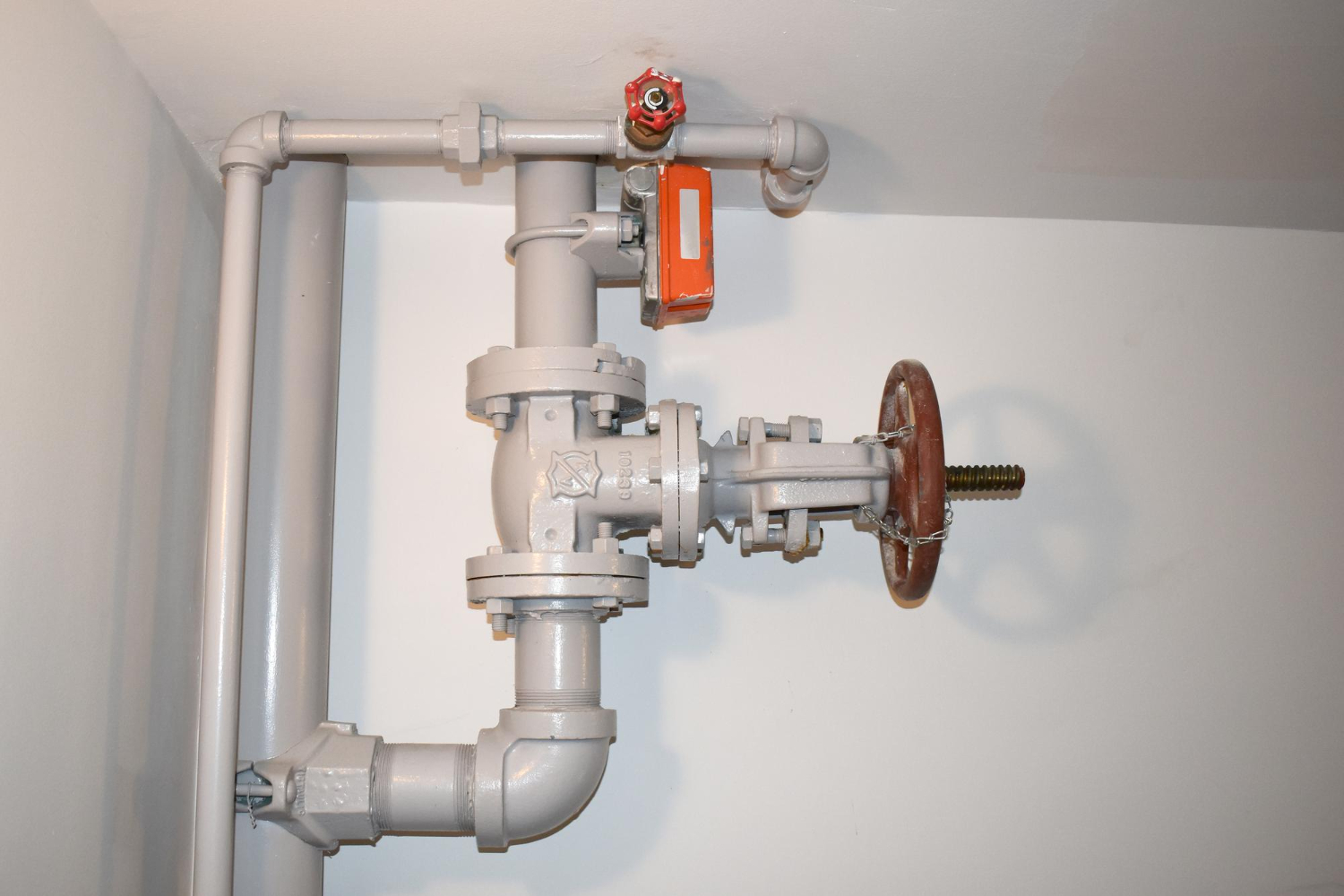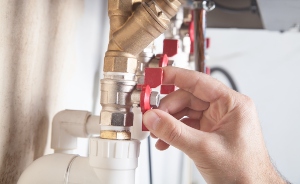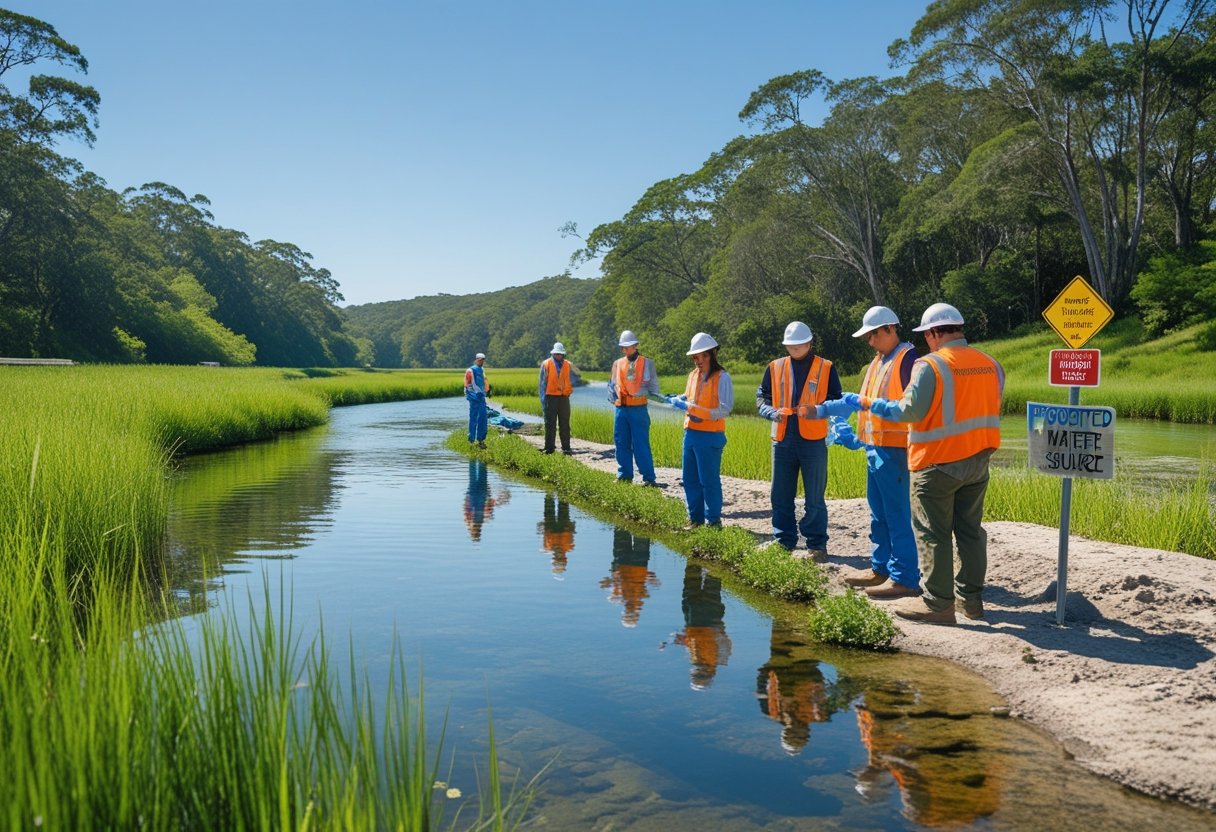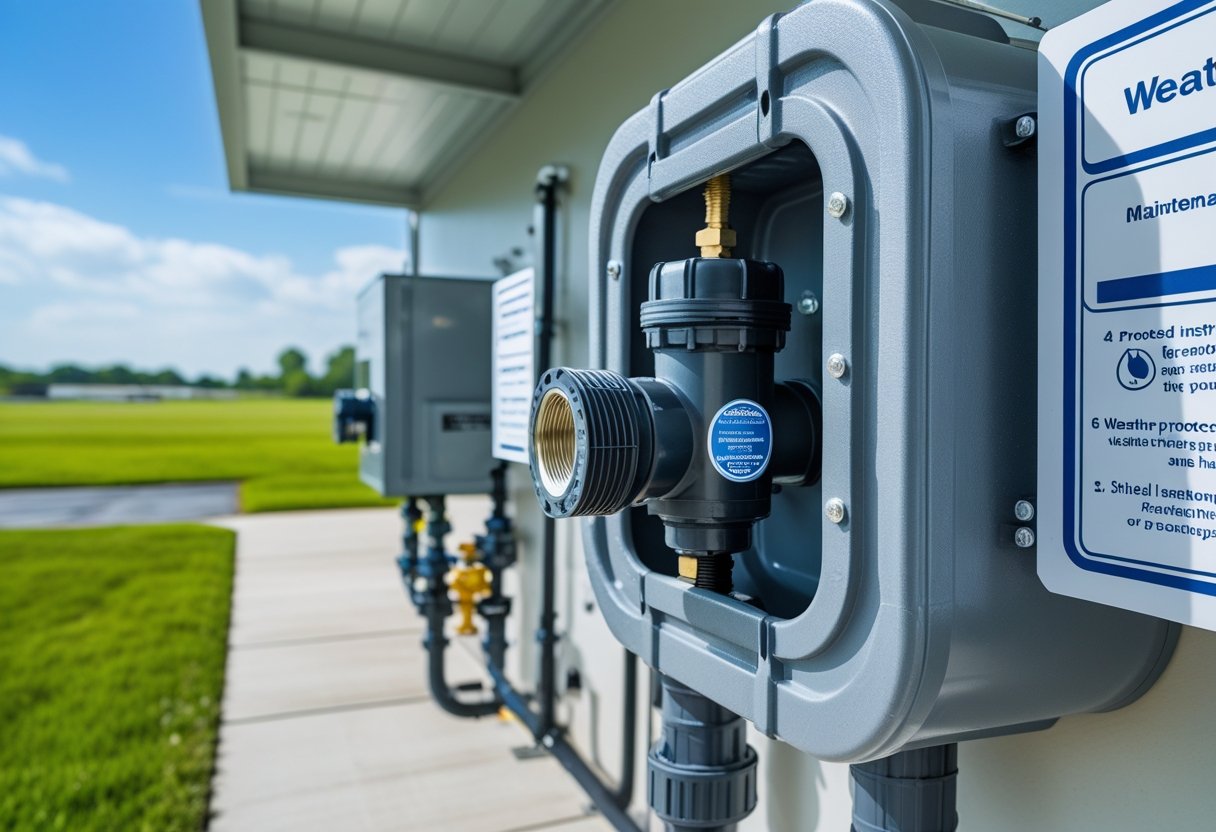Your backflow preventer quietly protects your drinking water from contamination every day, but it needs regular checkups to do its job properly. This critical safety device can fail without warning, putting your water supply at risk.
Most backflow prevention devices should be tested at least once per year, though some types like double check valves may only need testing every three years. The exact timing depends on your device type, local regulations, and the level of contamination risk at your property.
This guide covers the testing schedule rules, what happens during an inspection, costs you can expect, and how to handle repairs when your device doesn't pass.
In this article, you’ll learn how often backflow should be tested, what the inspection includes, and how to stay compliant with local water safety regulations.
Below, we’ll walk through each important aspect.
- What backflow testing means and why it's on your calendar
- How often should backflow be tested and simple rules that apply
- Cost, timing, and what to expect on test day
- Life expectancy and fixes when a device won't pass
- Stay compliant without the headache
Keep reading! Understanding when to test your backflow preventer helps you stay compliant with local codes and keeps your water safe.
What backflow testing means and why it's on your calendar
Testing checks if devices that stop dirty water from entering clean water supplies work properly. Most areas require annual tests by certified professionals, and homeowners must schedule these checks to stay compliant with local rules.
Backflow inspection vs annual backflow testing: what's the difference
A backflow inspection is a visual check that looks for obvious problems. Property owners can do this themselves by looking at the device for damage, leaks, or wear.
Annual backflow testing goes much deeper. A certified technician uses special tools to test how well the device works under pressure.
The testing process checks each part of the preventer. Technicians measure water pressure at different points to make sure the device blocks backward flow.
Key differences:
- Inspection: Visual check anyone can do
- Testing: Technical process requiring certification
- Frequency: Inspections can happen anytime, testing is required annually
- Equipment: Testing needs pressure gauges and special tools
Most local codes require the formal testing, not just inspections. The visual check helps spot problems between official tests.
Where preventers are installed at home and why they matter
Backflow preventers get installed where water enters a home from the main supply line. This is usually near the water meter or where pipes enter the house.
Some homes have multiple devices. Houses with sprinkler systems often need a separate preventer for irrigation lines.
Common installation spots:
- Main water service line
- Sprinkler system connections
- Pool and spa fill lines
- Boiler makeup lines
These devices stop contaminated water from flowing backward into the public water system. Without them, dirty water from one property could affect an entire neighborhood's water supply.
The main preventer protects the whole community. If water pressure drops in the street, these devices keep household water from flowing back into city pipes.
Local backflow preventing rules and who enforces them
Water utilities set backflow testing requirements for their service areas. Most require annual testing by state-certified technicians.
City or county health departments often enforce these rules. They track which properties need testing and send notices to property owners.
Liberty Lake requires all customers—residential, multifamily, and commercial—to have backflow assemblies tested annually, with test reports submitted to the water district after a successful inspection.
Typical enforcement actions:
- Warning letters for overdue tests
- Water service disconnection for non-compliance
- Fines for repeated violations
- Required immediate testing after violations
Testing deadlines vary by location. Some areas require tests by the same date each year, while others give property owners a window of time.
Property owners must hire certified testers and submit results to the water utility. The utility keeps records of all test results and sends reminders when new tests are due.
How often should backflow be tested and simple rules that apply
Most jurisdictions require annual testing of backflow prevention devices. The testing schedule depends on when devices were first installed and who oversees your water system.
Per Ohio EPA regulations, customers with a backflow prevention device must have their device inspected and tested annually by a State‑certified inspector to ensure it's functioning properly. Failure to submit test results on time may lead to service suspension.
Most areas require annual backflow testing for homes and irrigation
Annual testing is the standard requirement in most states and municipalities across the United States. Property owners must have their backflow prevention devices inspected once per year by a certified professional.
The testing must occur during the same month the device was originally installed. For example, if a backflow preventer was installed in March, the annual test must happen every March thereafter.
High-risk properties may need more frequent testing. Commercial buildings, industrial facilities, and properties with complex irrigation systems sometimes require testing twice per year or quarterly.
Homeowners with basic residential backflow preventers typically follow the standard annual schedule. Irrigation systems connected to potable water supplies also fall under this yearly requirement.
The testing ensures devices work properly to prevent contaminated water from flowing back into the clean water supply.
New installs, repairs, or fails that trigger an extra test
Newly installed backflow preventers require immediate testing before they can be put into service. This initial test confirms the device works correctly and meets local standards.
Any repairs or maintenance work on existing backflow preventers also triggers a mandatory retest. Property owners cannot wait until the next scheduled annual test.
Failed devices must be retested after repairs. When a backflow preventer fails its annual inspection, the owner must fix or replace it within a specified timeframe, usually 10 to 30 days.
The replacement or repaired device needs testing before reconnection to the water system. This extra test does not change the regular annual testing schedule.
Who sets the schedule: city, water authority, or HOA
Local water authorities typically establish testing requirements and schedules for their service areas. City water departments, municipal utilities, and regional water districts create the rules property owners must follow.
Some homeowners associations add their own backflow testing requirements beyond what local authorities require. These additional rules usually apply to common irrigation systems or shared water features.
State regulations provide the foundation for local testing requirements. Most states mandate annual testing but allow local authorities to set specific deadlines and procedures.
Property owners should contact their water provider to understand which entity sets their testing schedule. The water bill or utility website usually contains this information and testing deadlines.
Cost, timing, and what to expect on test day
Testing costs range from $50 to $150 per visit, and the inspection takes 20-30 minutes with specialized gauges and shutoffs. Property owners need minimal preparation but should clear access areas beforehand.
Backflow test cost explained in plain english
Backflow testing costs vary based on location, device type, and local market rates. Most property owners pay between $50 and $150 per test.
Several factors affect the final price:
- Device complexity: Simple residential devices cost less than commercial systems
- Location access: Hard-to-reach devices may increase labor costs
- Regional rates: Urban areas typically charge more than rural locations
- Service provider: Certified plumbers often charge more than specialized testing companies
Most cities require annual testing. This creates a predictable yearly expense for property owners.
Some testing companies offer discounts for multiple devices or repeat customers. Commercial properties with several backflow devices may negotiate better rates.
Emergency or rush testing costs significantly more than scheduled appointments. Planning ahead helps avoid these premium charges.
Step-by-step test with gauges, shutoffs, and pass/fail notes
The technician arrives with specialized gauges and testing equipment. They first locate the backflow device and inspect it visually for damage or wear.
The testing process follows these steps:
- Initial inspection - Check for leaks, corrosion, or physical damage
- Gauge attachment - Connect pressure gauges to specific test ports
- Valve testing - Test each valve and shutoff systematically
- Pressure readings - Record measurements at different pressure points
- Flow direction check - Verify water flows in the correct direction only
The technician takes detailed notes throughout the process. They record pressure readings and valve performance data.
Pass/fail criteria are strict. Devices that fail any part of the test need immediate repair or replacement. The technician provides a written report showing exactly which components passed or failed.
Failed devices must be retested after repairs. This ensures they meet safety standards before returning to service.
How long the visit takes and what to prep before arrival
A standard backflow test takes 20-30 minutes for most residential and small commercial devices. Complex commercial systems may need up to an hour.
Property owners should prepare these items:
- Clear access to the backflow device
- Remove any stored items or vegetation blocking the area
- Ensure gates or locked areas are accessible
- Have previous test reports available if requested
The technician needs unobstructed access to all sides of the device. They must reach test ports and valves easily.
No water shutoff is typically required during testing. Normal water use can continue in most cases.
Scheduling works best during regular business hours. Many testing companies charge extra for evening or weekend appointments.
The technician provides a completed report before leaving. This document shows test results and any required repairs or follow-up actions.
Life expectancy and fixes when a device won't pass
Most backflow preventers last 5 to 25 years depending on water quality and usage. When a device fails testing, professionals must decide whether to repair or replace based on age, cost, and severity of problems.
Typical lifespan of a backflow preventer and signs it's aging
Backflow preventers typically last 5 to 15 years with proper maintenance. Some high-quality devices can function for 20 to 25 years under ideal conditions.
Water quality affects lifespan significantly. Corrosive or hard water damages internal parts faster than clean water.
Frequent use puts more stress on mechanical components. Devices that operate constantly may fail sooner than those used occasionally.
Common signs of aging include:
- Pressure drops during testing
- Valve leaks or drips
- Corroded or worn internal parts
- Failed relief valve operation
- Inconsistent test results
Annual testing reveals most problems before complete failure. About 20 to 25 percent of devices fail their yearly inspections.
Regular maintenance can extend device life beyond average expectations. Well-maintained preventers often outlast neglected ones by several years.
Repairs vs replacement and how pros decide after a fail
Certified testers evaluate several factors when a device fails inspection. The decision between repair and replacement depends on cost and device condition.
Key decision factors:
- Age of device - Units over 10 years old often get replaced
- Repair costs - Expensive fixes may justify replacement
- Availability of parts - Older models may lack replacement components
- Severity of failure - Major internal damage usually requires replacement
Minor issues like worn seals or gaskets can often be repaired affordably. These fixes typically cost less than full replacement.
Major problems like cracked housings or multiple component failures usually require replacement. The cost of extensive repairs often exceeds new device prices.
Professional testers consider the device's remaining useful life. A 15-year-old unit with major problems will likely be replaced rather than repaired.
Paperwork, tags, and certification after the fix
All repairs and replacements require proper documentation and certification. Only state-certified backflow testers can perform this work legally.
Required documentation includes:
- Test report showing pass/fail status
- Repair or replacement records
- Parts replacement list
- Certification of proper installation
Metal tags get attached to repaired or replaced devices. These tags show the test date, tester certification number, and next test due date.
Property owners receive copies of all paperwork. Local water authorities also get reports to maintain compliance records.
New devices must pass initial testing before certification. Repaired units need retesting to confirm proper operation.
Test reports become part of permanent property records. These documents prove compliance with local water safety regulations.
Stay compliant without the headache
Property owners can avoid compliance issues by setting up simple systems for tracking test dates and working with reliable testing companies. Missing required tests leads to costly fines and potential water service shutoffs.
Reminders, annual backflow inspection scheduling, and easy renewal
Most areas require backflow testing once per year. Some locations mandate testing every six months for commercial properties or devices serving multiple buildings.
Property owners should mark test due dates on calendars or set phone reminders. Many testing companies offer automatic scheduling services that send notices 30 days before tests expire.
Key scheduling tips:
- Schedule tests 2-3 months before expiration dates
- Keep records of previous test dates and results
- Ask testing companies about reminder services
- Set up recurring calendar alerts
Smart property owners schedule tests early in the compliance period. This gives time to fix any problems before deadlines pass. Late scheduling can cause stress if devices fail and need repairs.
What happens if you skip testing: fines, retests, or shutoffs
Cities and counties impose penalties for missed backflow tests. Common consequences include monetary fines, mandatory retesting, and water service disconnection.
Typical penalties include:
- Fines ranging from $100 to $500 per violation
- Daily penalties until testing is completed
- Water service shutoff warnings
- Required immediate testing at higher costs
Some areas charge escalating fines that increase each month testing remains overdue. Water departments may disconnect service without additional notice once grace periods end.
Emergency testing costs more than scheduled testing. Rush jobs often carry premium fees of 50-100% above standard rates.
Need a certified test and same-day certificate? Pacific Backflow can test, certify, and file your report this week
Certified testers must perform all backflow inspections. These professionals use calibrated equipment and submit official reports to local authorities.
Pacific Backflow provides same-day testing and certification services. Their certified technicians complete tests quickly and file required paperwork immediately with city offices.
Services include:
- Same-day testing appointments
- Immediate certificate issuance
- Direct report filing with municipalities
- Repair services if devices fail testing
Quick turnaround helps property owners meet tight deadlines. Same-day service prevents compliance gaps that could trigger penalties or service interruptions.
The company handles all paperwork submission requirements. This removes the burden of filing reports with multiple agencies or departments.
Conclusion
Testing backflow preventers regularly keeps water systems safe. Most areas require annual testing by certified professionals.
Property owners should check their local regulations. Different cities and states have different rules.
Testing schedules depend on several factors. The type of system matters. Location affects requirements too.
Certified testers must perform these inspections. They have the proper training and equipment. They know how to spot problems early.
Property owners receive notices when testing is due. The test happens in the same month each year as the first installation.
Some systems need more detailed inspections every five years. These check for wear and damage that annual tests might miss.
Skipping tests can lead to fines. More importantly, it puts water safety at risk. Broken backflow preventers can contaminate the entire water supply.
Setting up annual testing protects everyone. It keeps water clean and safe to drink. Most testing companies offer reminder services to help property owners stay on schedule.
Schedule your annual backflow inspection with a certified technician to stay compliant and ensure your water supply remains safe.











